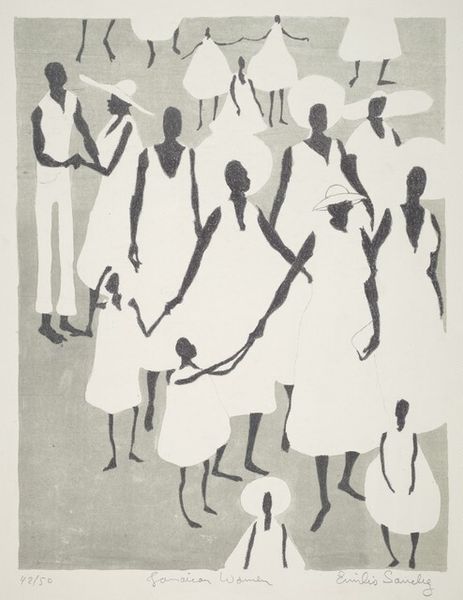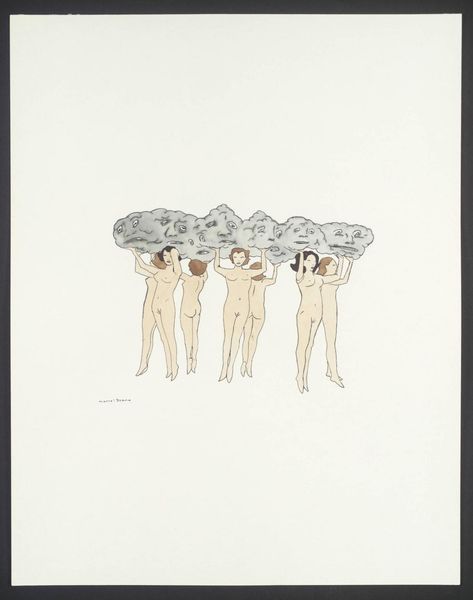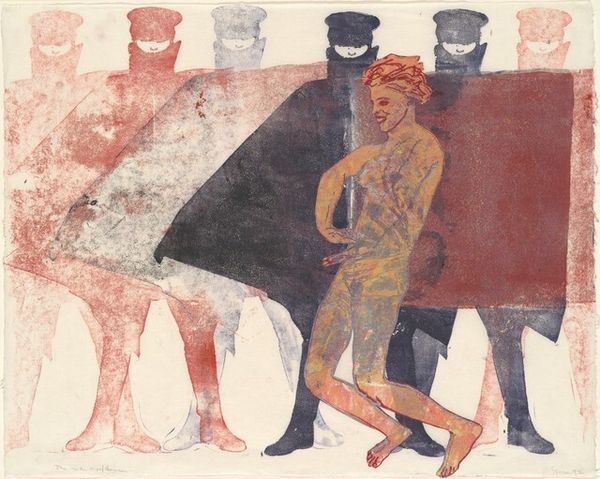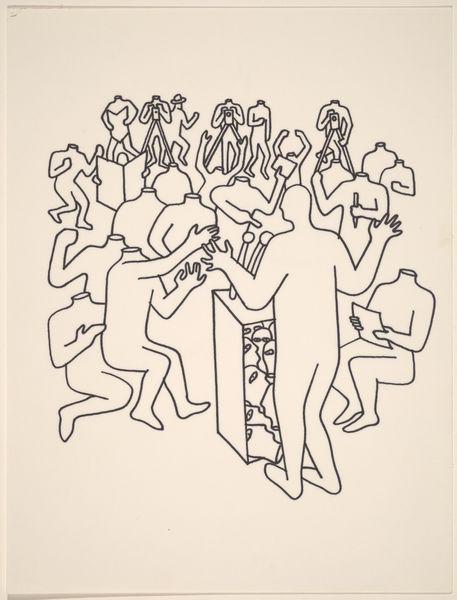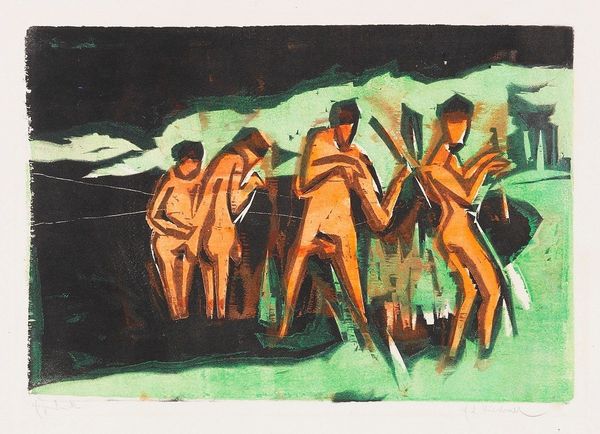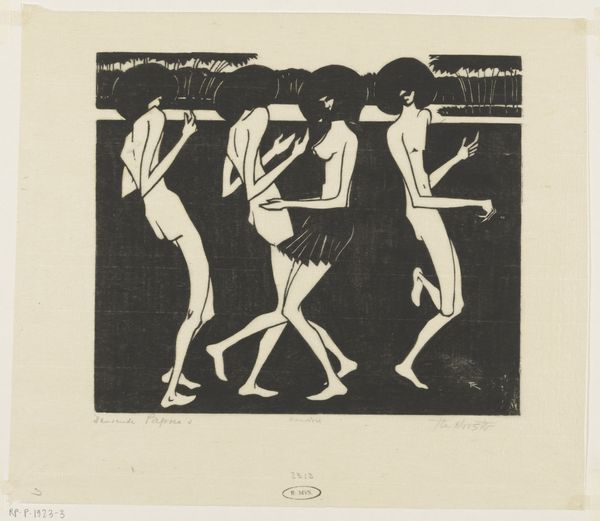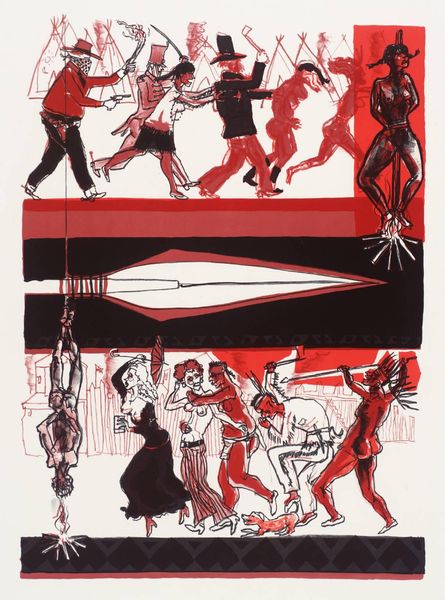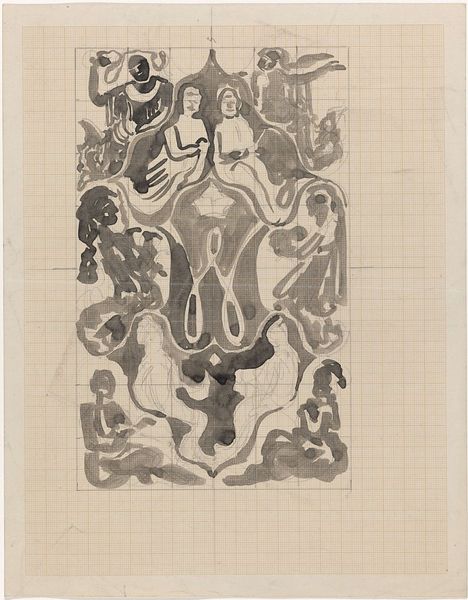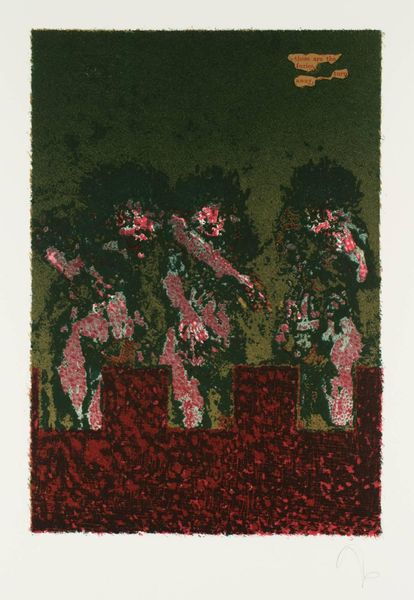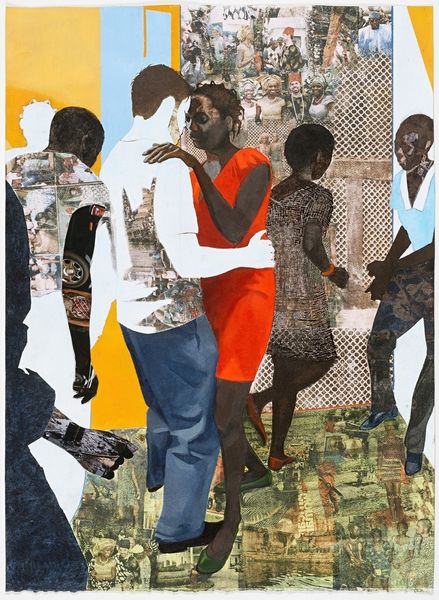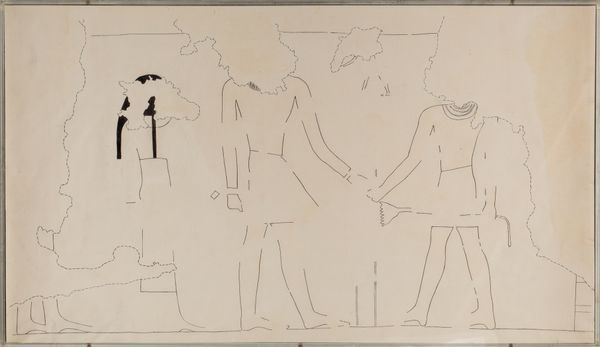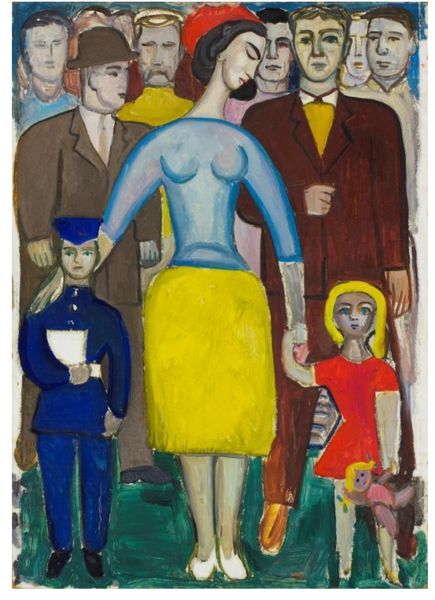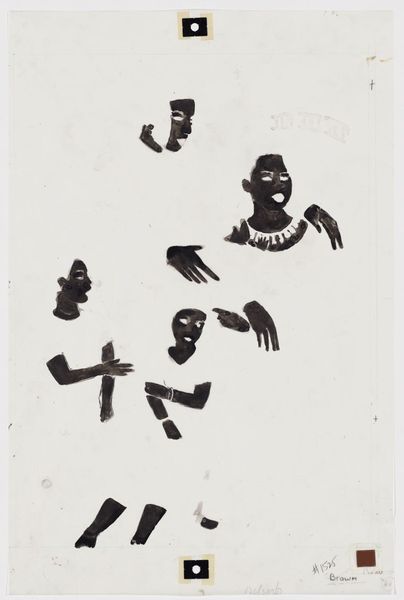
Dimensions: 350 x 280 mm
Copyright: © Marcel Dzama, courtesy of David Zwirner, New York | CC-BY-NC-ND 4.0 DEED, Photo: Tate
Editor: So, this is an untitled watercolor work by Marcel Dzama. It presents figures who appear both human and… something else. There's almost a theatrical feeling to it, but also a kind of unsettling stillness. What strikes you most about this piece? Curator: I'm interested in how Dzama uses these figures to explore themes of identity and performance. The blend of human and non-human elements can be seen as a commentary on societal roles, perhaps even a critique of power structures. What does this hybridity suggest to you about conformity versus individuality? Editor: I hadn't considered the power dynamics. It's interesting how the "tree-headed" figures are also the ones in formal attire. I'll definitely be thinking about this one differently now. Curator: Exactly! And how does this reading shift when we consider Dzama's background and influences, engaging with Dada and Surrealism? It's about constantly questioning what we see, and how societal expectations shape our perceptions.
Comments
Join the conversation
Join millions of artists and users on Artera today and experience the ultimate creative platform.
tate 7 months ago
⋮
This untitled drawing shows two sets of costumed figures interacting. Two male figures in the centre of the page appear each to be addressing a group of three women to either side. The six women are depicted in virtually identical brown dresses that extend up their necks and fit closely over their heads, opening only in a triangular aperture over the nose, mouth and chin, and in oval-shaped holes around the eyes. Their hands are gloved, either by extensions of their dresses, or by elbow-length gloves in a darker shade of brown. By contrast, their lower legs and feet are bare. Clad in green trousers and shirts with matching bow-ties, the male figures have heads composed of shortened trunk-like forms that extend above their cartoon facial features with forked leafless branches. The hands of the figure on the left, who is also wearing a green waistcoat, appear human; those of the figure on the right are twig-like, evoking a more tree-like hybrid. Outlined in black ink and coloured in Dzama’s most commonly used shades of dull brown and green watercolour paint, the figures float in the neutral ground provided by the creamy Manila paper on which they are depicted, with no further clues as to the fragment of narrative evoked.
